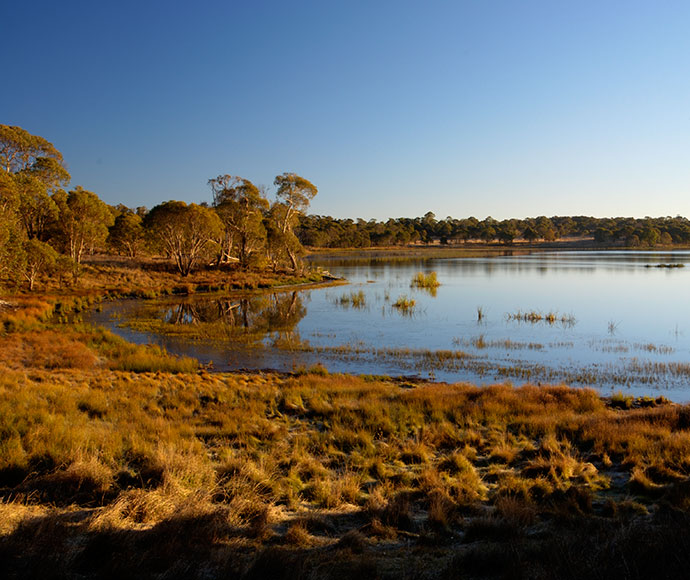Little Llangothlin Nature Reserve Ramsar site is near Guyra in northern New South Wales and covers an area of 258 hectares. It includes Little Llangothlin Lagoon and part of Billy Bung Lagoon, a smaller lake in the same catchment.

Little Llangothlin Nature Reserve became a Ramsar site in 1998.
Why these wetlands were listed as a Ramsar site
Countries that sign up to the Ramsar Convention can nominate sites to be listed as Wetlands of International Importance (Ramsar sites). The site must meet at least one of 9 internationally accepted criteria.
Little Llangothlin Nature Reserve was listed under the Ramsar Convention in 1998 because it meets the following criteria.
Criterion 1: Representative or unique wetlands
Little Llangothlin Nature Reserve supports 2 examples of high-altitude lakes, most of which have now been cleared from the NSW New England tablelands.
Little Llangothlin Lagoon (105 hectares), one of the largest examples of a high-altitude lake, is also rare due to its near-natural condition. Most of the region’s lakes have been severely degraded by changes to the stream flow, grazing and cropping.
Criterion 2: Threatened species or ecological communities
Little Llangothlin Nature Reserve supports threatened species including:
- the Austral toadflax
- the Australasian bittern
- the threatened ecological community Upland wetlands of the New England Tablelands and the Monaro Plateau.
It also supports the threatened ecological community New England peppermint grassy woodlands and one of the few high-quality remaining Carex fens in the New England tablelands – these are now rare in New South Wales.
Criterion 4: Supports species at a critical stage of their life cycle or provides refuge in adverse conditions
Little Llangothlin Nature Reserve provides a refuge for waterbirds during droughts, including the Pacific black duck, grey teal, Australasian shoveler, Eurasian coot and white-faced heron.
The site also supports 8 migratory waterbirds listed under international agreements. Other waterbirds that are known from the site include the blue-billed duck and freckled duck.
How the site is managed
Management of this Ramsar site is guided by the following:
- the site’s Ramsar information sheet
- its ecological character description
- a plan of management for Little Llangothlin Nature Reserve.
Threats to the Ramsar site
The main threats to this site’s ecological character include:
- on-site clearing, grazing and sedimentation
- runoff and sedimentation from surrounding land
- groundwater extraction in the catchment
- introduced plants such as pasture grasses
- introduced animals such as rabbits, foxes and feral cats
- visitors and recreational use.